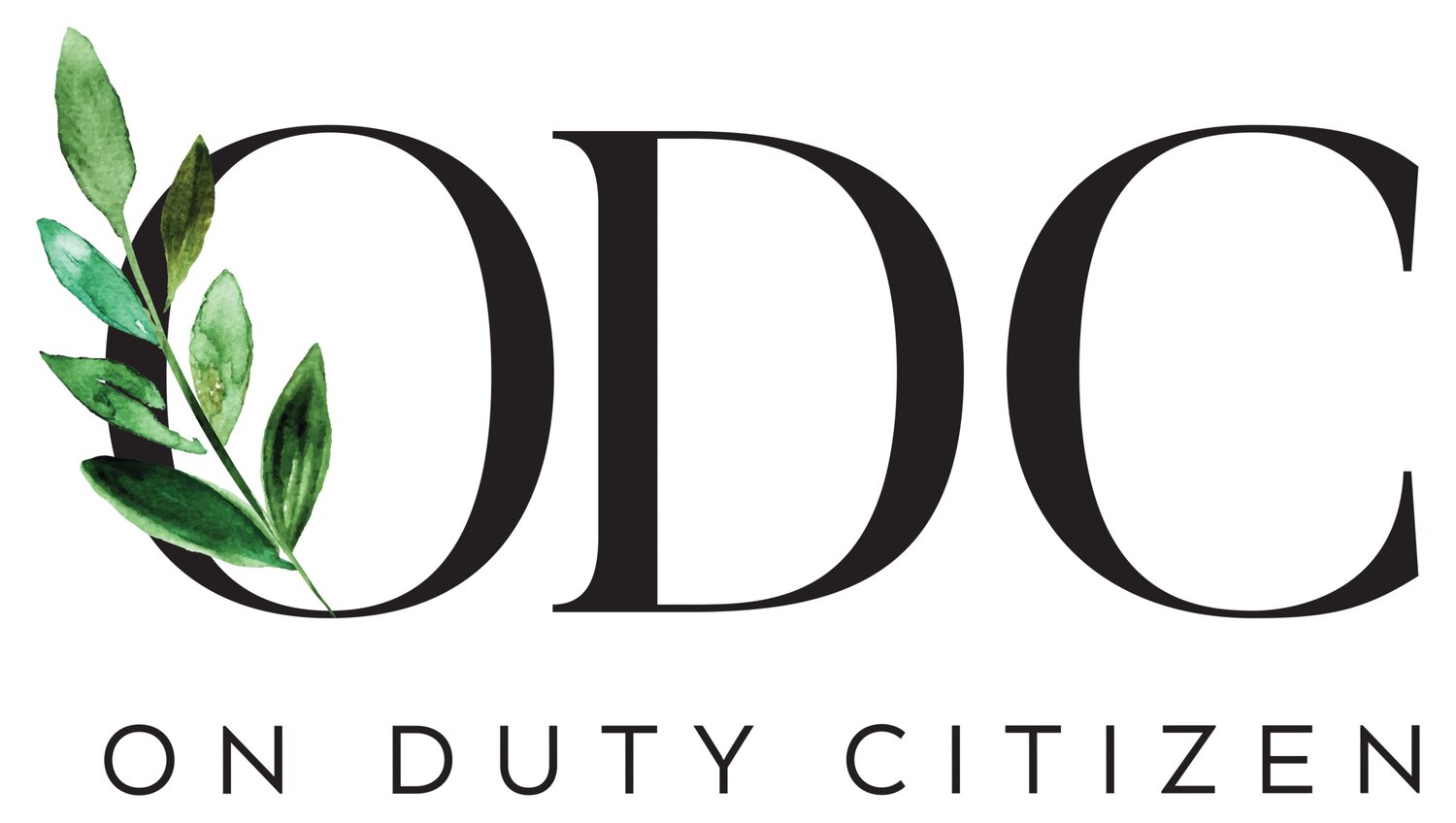ON DUTY CITIZEN
NISHA MIRANI
1) Could you briefly introduce yourself and describe your role at Sunday Monday?
My name is Nisha and I’m the founder of Sunday Monday, a textile brand based in New York. We work directly with textile artists in India, where my family is from, to make scarves and home textiles using traditional textile production methods.
I run Sunday Monday full time. That includes everything from designing textiles to running social media accounts to managing operations in India.
2) I immediately fell in love with your brand when I saw the beautiful colors and patterns on all your textiles. You could tell there was an interesting story behind each piece simply by looking at them. Can you share this story as well as describing what makes each piece so unique?
Thank you so much! Our work is inspired nature and color as well as the rich design cultures of our respective Indian and Japanese heritages.
Each piece is unique because it reflects the person and place involved in creating it. With our block printed textiles, each one is block printed by hand so no two will be exactly alike.
The local climate also plays a large part in how our final products look. Textiles dyed or steamed on more humid days look different than ones made on dry, sunny days. We only produce in small batches so there are small variations between each batch, make each piece unique and special.
3) From idea to conception, what is the production process like? Can you tell us about what weaving and block printing facilitates?
Once we have an idea, we spend time doing research and sketching. We then send the design to our partners in India who give us welcome feedback and insight. Weaving entails choosing the type of yarn, hand-dyeing the yarn if needed, and setting up the handmade loom. A simple design may be completed in one day but more intricate weavings can take weeks.
Hand block printing requires having a block hand-carved into wood, which can take anywhere from an hour to days depending on the intricacy. If we are working with natural dye, our block printing team will use a family recipe of local ingredients to create the natural color, another process that can take days. Then fabrics are dyed and washed, and dried on lines under the hot desert sun. All of this before they even start printing. Then printing, drying, washing, drying and pressing, follow.
4) I read online that the work of Sunday Monday is inspired by rich design histories of both co-founders respective Indian and Japanese heritages. Can you tell us a bit about how you both translate these influences into each design?
Sure! We do a lot of research into various traditional motifs as a starting point, then work to incorporate the spirit of the motif or design into a new textile. For example, we will play with the scale of a pattern or draw inspiration from traditional color combinations.
We also love color at Sunday Monday. India is known for its bright colors that we love, but we also like to bring attention to the lesser known neutral and earthy palette found in its desert landscape, natural fibers and dyes. While Japan is more known for a minimal aesthetic, we are just as inspired by the colors and graphic motifs found in Japanese design.
It’s important to us to celebrate and honor our cultures while putting our own spin on them.
5) How do you think companies can transform the fashion industry and make it more sustainable and ethical?
I think companies can start with taking care of their workers. That includes providing fair pay, benefits, childcare, education, job growth opportunities, and safe working conditions. This also requires slowing down production, which hopefully leads to less waste.
6) How do you think the creative culture differs in India versus America?
In my experience, it seems creative culture in America is more structured and formal. It’s something you invest time and money into and having a degree may be required. In India, art is all around, from hand-painted trucks driving goods on the highway to the way flower and vegetable markets are set up on recycled saris.
It may feel less intentional to an American, but creativity is embedded in Indian culture and history. While there are many formal, respected design institutions there too, there are just as many talented people who learned their crafts from family or community. However, not everyone there sees it as an appealing or even possible career choice.
7) In the climate change movement, who inspires you? Do you have any favorite resources you use to learn more about sustainability?
Our textile partners inspire me! Visiting India and working side by side with them has taught me so much. Our block printing partner studio is open-air and located on their family farm where they grow crops to feed their community. It has always been in their own interest to dye in small batches and use non-toxic and natural dyes, because the dyes they use go right back into their soil and their children often visit after school.
In terms of textile waste, with the occasional batch of textiles that doesn’t come out right, they often use the material to make useful items like bags or cushions. They are a tight knit community who take care of their land and resources, because they understand that it is all intertwined. They also cannot pass on their crafts to future generations if the land and resources are destroyed.
8) What does intersectional environmentalism mean to you?
Intersectional environmentalism to me means justice for all people and for the planet. It means acknowledging that social inequalities are part of environmentalism and doing the long and hard work to fix existing structures while amplifying and protecting the voices of vulnerable communities.




